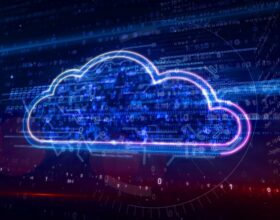AI twins and the digital revolution

The digital twin is designed to work across a single base station with a few mobile devices all the way up to hundreds of base stations with thousands of devices. “I would say the RF propagation piece is perhaps one of the most exciting areas apart from the data collection,” Vasishta noted. “The ability to simulate at scale real antenna, including interface interference and other elements, data is where we’ve really spent the most time to make sure that it is an accurate implementation”. The platform also includes a software-defined, full RAN stack to allow researchers and members to customise, programme and test 6G network components in real time. Vendors, such as Nokia, can bring their own RAN stack to the platform, but Nvidia’s open RAN compliant stack is provided. Vasishta added users of the research platform can collect data from their digital twin within their channel model, which allows them to train for optimisation. “It now allows you to use AI and machine learning in conjunction with a digital twin to fully simulate an environment and create site specific channel models so you can always have best connectivity or lowest power consumption, for instance,” he said.
The temptation of AI as a service

AWS has introduced a new feature aimed at becoming the prime hub for companies’ custom generative AI models. The new offering, Custom Model Import, launched on the Amazon Bedrock platform (enterprise-focused suite of AWS) and provides enterprises with infrastructure to host and fine-tune their in-house AI intellectual property as fully managed sets of APIs. This move aligns with increasing enterprise demand for tailored AI solutions. It also offers tools to expand model knowledge, fine-tune performance, and mitigate bias. All of these are needed to drive AI for value without increasing the risk of using AI. In the case of AWS, the Custom Model Import allows model integrations into Amazon Bedrock, where they join other models, such as Meta’s Llama 3 or Anthropic’s Claude 3. This provides AI users the advantage of managing their models centrally alongside established workflows already in place on Bedrock. Moreover, AWS has announced enhancements to the Titan suite of AI models. The Titan Image Generator, which translates text descriptions into images, is shifting to general availability.
Overwhelmed? 6 ways to stop small stresses at work from becoming big problems

"Someone once used the analogy that you have crystal balls and bouncy balls. If
you drop your crystal ball, it shatters, and you'll never be able to get it
back. Whereas if you drop your bouncy ball, it will bounce back." "I think you
need to work out the crystal balls to prioritize because if you drop that ball,
it's gone. For me, it always helps to take stuff off the priority list. And I
think that approach helps with work/life balance. Sometimes, it's important to
choose." ... "If we have a small problem in one store, and we pick up that's
prevalent in all stores, collectively the impact is significant. So, that's why
I get to the root cause as quickly as possible." "And then you understand
what's going on rather than just trying to stick a plaster over what appears to
be a cut, but is something quite a bit deeper underneath." ... "If you look at
something in darkness, it can feel pretty overwhelming quickly. So, giving a
problem focus and attention, and getting some people around it, tends to put the
issue in perspective." ... "It's nice to have someone who can point out to
you, 'You're ignoring that itch, why don't you do something about it?' I've
found it's good to speak with an expert with a different perspective."
15 Characteristics of (a Healthy) Organizational Culture

Shared common values refer to the fundamental beliefs and principles that an
organization adopts as its foundation. These values act as a compass, guiding
behaviors, decision-making, and interactions both within the organization and
with external stakeholders. They help create a cohesive culture by aligning
employees’ actions with the company’s core mission and vision. ... A clear
purpose and direction align the organization’s efforts and goals. This clarity
helps unite the team, focusing their efforts on achieving specific objectives
and guiding strategic planning and daily operations. ... Transparent and regular
communication supports openly sharing information and feedback throughout the
organization. This practice fosters trust, helps in early identification of
issues, encourages collaboration, and ensures that everyone is informed and
aligned with the organization’s goals. ... Collaboration and teamwork underpin a
cooperative environment where groups work together to achieve collective
objectives. This approach enhances problem-solving, innovation, and efficiency,
while also building a supportive work environment.
Palo Alto Networks’ CTO on why machine learning is revolutionizing SOC performance

When it comes to data center security, you have to do both. You have to keep
them out. And that’s the role of traditional cybersecurity. So network security,
including, of course, the security between the data center and Ethernet,
internal security for segmentation. It includes endpoint security for making
sure that vulnerabilities aren’t being exploited and malware isn’t running. It
includes identity and access management. Or even privileged access management
(PAM), which we don’t do. We don’t do identity access or PAM. It includes many
different things. This is about keeping them out or not letting them walk inside
laterally. And then the second part of it which, which goes to your question, is
now let’s assume they are inside and all defenses have failed. It’s the role of
the SOC to look for them. We call it hunting, the hunting function in the SOC.
How do we do that? You need machine learning, not [large language models] LLMs,
or GPT, but real, traditional machine learning, to do both, both to keep them
out and also both to find them if they’re already inside. So we can talk about
both and how we use machine learning here and how we use machine learning
there.
From hyperscale to hybrid: unlocking the potential of the cloud
To optimize their cloud adoption strategies, and ensure they architect the best
fits for their needs, organizations will first need to undertake detailed
assessments of their workloads to determine which cloud combinations to go for.
Weighing up which cloud options are most appropriate for which workloads isn’t
always an easy task. Ideally, organizations should utilize a cloud adoption
framework to help scope out the overall security and business drivers that will
influence their cloud strategy decision-making. Enabling organizations to
identify and mitigate risks and ensure compliance as they move ahead, these
frameworks make it easier to proceed confidently with their cloud adoption
plans. Since every infrastructure strategy will have unique requirements that
include tailored security measures, leveraging the expertise of cloud security
professionals will also prove invaluable for ensuring appropriate security
measures are in place. Similarly, organizations will be able to gain a deeper
understanding of how best to orchestrate their on-premises, private, and public
clouds in a unified and cost/performance-optimized manner.
No Fear, AI is Here: How to Harness AI for Social Good

We must proactively think about how our organizations can responsibly leverage
AI for good. Our role is to offer our teams the support and guidance required to
harness AI’s full power in ways big and small to inspire positive change,
ensuring fear doesn’t override optimism. While AI has an undeniable advantage
when it comes to its ability to outperform, it cannot replace the power of human
creativity, perspectives, and deep insight. ... We only have a finite amount of
time to address climate change and related issues such as poverty and inequity.
To get there, we’re going to have to try. And then try again. And again. Though
it will be an uphill climb, AI can help us climb faster -- and explore as many
options as we possibly can, as quickly as we can -- if we use it responsibly.
The key is for tech impact leaders to bring forward a human-centric perspective
to their company’s investments and use of AI technology, ensuring that their
strategies don’t lead to unintended consequences for employment. Don’t let fear
prevent you from getting all the help you can from the most powerful technology
available. Your team, and the world, need you to be fearless.
Data for AI — 3 Vital Tactics to Get Your Organization Through the AI PoC Chasm
We now have the opportunity to automate manual heavy lifting in data prep. AI
models can be trained to detect and strip out sensitive data, identify
anomalies, infer records of source, determine schemas, eliminate duplication,
and crawl over data to detect bias. There is an explosion of new services and
tools available to take the grunt work out of data prep and keep the data bar
high. By automating these labor-intensive tasks, AI empowers organizations to
accelerate data preparation, minimize errors, and free up valuable human
resources to focus on higher-value activities, ultimately enhancing the
efficiency and effectiveness of AI initiatives. ... AI is being experimented
with and adopted broadly across organizations. With so much activity and
interest, it is difficult to centralize work, and often centralization creates
bottlenecks that slow down innovation. Encouraging decentralization and autonomy
in delivering AI use cases is beneficial as it increases capacity for innovation
across many teams, and embeds work into the business with a focus on specific
business priorities.
Blockchain Distributed Ledger Market 2024-2032

Organizations are leveraging blockchain's decentralized and immutable ledger
capabilities to enhance transparency, security, and efficiency in their
operations. Secondly, the growing demand for secure and transparent
transactions, coupled with the rising concerns over data privacy and
cybersecurity, is driving the adoption of blockchain distributed ledger
solutions. Businesses and consumers alike are increasingly turning to blockchain
technology to safeguard their data and assets against cyber threats and
fraudulent activities. Moreover, the proliferation of digitalization and the
internet of things (IoT) is further driving market growth by creating a demand
for reliable and tamper-proof data storage and transmission systems.
Blockchain's ability to provide a decentralized and verifiable record of
transactions makes it well-suited for IoT applications, such as supply chain
tracking, smart contracts, and secure data sharing. Additionally, the emergence
of regulatory frameworks and standards for blockchain technology adoption is
providing a favorable environment for market expansion, as it instills
confidence among businesses and investors regarding compliance and legal
aspects.
The real cost of cloud banking

Although compute and memory costs have come down and capacities have gone up
over the years, the fact is an inefficient piece of software will still cost you
more today than a well-designed, optimised one. Before it was a simple case of
running your software and checking how much memory you were using. With cloud,
the pricing may be transparent, but the options available and cost calculation
are much more complex. Such is the complexity involved with cloud costs that
many banks bring in specialists to help them optimise their spend. In fact, it’s
not only banks, but banking software providers too. Cloud cost optimisation is a
fine art that requires time and expertise to fully understand. It would be easy
to blame developers, but I’ve never seen business requirements that state that
applications should minimise their memory use or use the least expensive type of
storage. I’ve been in the position of “the business” needing to make decisions
on requirements for storage options, and these decisions aren’t easy, even for
someone with a technical background. In defence of cloud providers, their
pricing is transparent.
Quote for the day:
“The road to success and the road to
failure are almost exactly the same.” -- Colin R. Davis
No comments:
Post a Comment